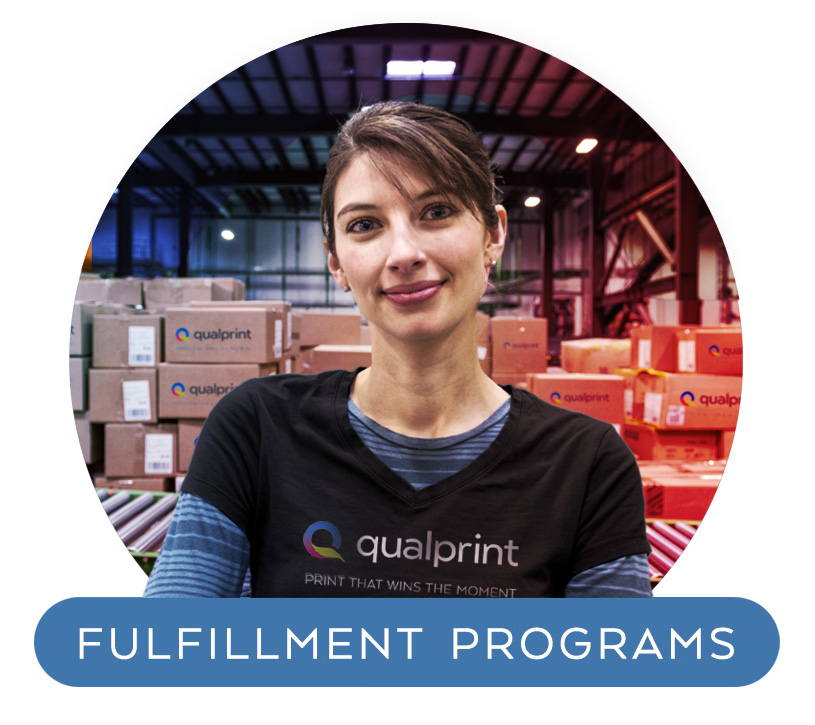Print Layout Services & Printing Prepress
So just what are printing prepress and print layout services? Good question. Prepress services refer to work that takes place after a commercial printer like Qualprint receives an order and graphic file from the customer, but before actual printing takes place. In short, it’s getting that file ready to print – ensuring that everything is accurate, in place and ready – to ensure that what gets printed is going to be exactly what the customer intended and ready to help win the moment for the customer’s brand.
We take prepress very seriously, and like we do for all our services, we support prepress with some of the world’s best, most accurate technologies.
Layout services are different, and typically take place before the prepress process. Sometimes, a customer may know what they want to produce, but may not have a final graphic file ready to give their printer. Layout services fill the gap, offering the customer graphic design help as needed to produce the final file that will then go into prepress. We have graphic designers on staff ready to help any customer who needs this kind of design and layout support.
From here, we’ll focus on detailing the printing prepress process and how Qualprint can help.
Print Prepress Services and Process
Prepress processes vary based on the type of project as well as the printing method – digital or offset – that will be used to produce the final piece. So, here’s a general description of our print prepress services and the main steps needed in the prepress process for a print job, some of which apply only to offset printing.
Pre-flighting Process
This is all about making sure the file is ready to be printed. It works like this. We get a file from the customer or the customer’s designer, Then we review it to make sure it contains all the elements needed to produce the final materials correctly. Are the crop marks, bleed and margins accurate? Are the fonts needed included in the file? Are the images the proper resolution needed? Are the Pantone Matching System or CMYK color settings correct? We answer all these questions and take any needed steps to correct any problems. And then we convert the file to the final file format needed for printing.
While it’s not typically the printer’s job to ensure things like spelling and grammar are correct before printing, our prepress team often catches any such problems in the pre-flight stage, avoiding embarrassing errors or rerunning jobs. Although, we strongly encourage customers to carefully proofread all files before submitting them. Correcting errors in the prepress or printing stages can result in lost time and money.
The Print Proofing Stage
In this stage, the final file created in the preflight stage is used to create a proof for the customer to review and approve. Print proofing is typically an accurate a representation as possible of what the final printed piece will look like without actually printing it. It can be shared and reviewed as a digital file or as a physical proof. In the case of any print jobs that include bindery services like folding (e.g., catalogs and brochures) we typically provide a physical version so the customer can see what the final piece will be like to handle. For a digitally printed piece, after customer review and approval, the prepress process is typically complete, and the digital file is sent straight to the digital printer for printing.
As a side note, we mentioned earlier our commitment to the world’s best print production technologies. That comes into play at the proofing stage with the KODAK INSITE Prepress Portal – a combination of sophisticated hardware and software that we install in your offices. Your designers and brand managers can use the system to manage the prepress process remotely – checking color and proofing content and managing your files in real-time collaboration with us. No leaving the office. And all changes and reviews are tracked for full job visibility.
Learn more here.
Making the Printing Plates
This applies to offset printing jobs. This is the process of creating the plates needed for an offset print run. Images from the approved file are digitally transferred to a series of plates – usually one for each color needed for the job as well as any ancillary applications like spot varnish. These plates are treated so areas where images and copy are to appear attract ink – and areas that shouldn’t, repel it. These plates are then mounted on the offset printing press where they are used to transfer ink onto a rubber blanket that then transfers the images to paper or whatever material is being used for the job. Once the printing process starts, paper or other substrates are printed with each color one by one until the image is recreated in totality.
Press Proofs
The quality of today’s digital and online review processes have made this step less necessary, but sometimes it makes sense for a customer’s design team to review the first few printed pieces that come off either an offset of digital press to ensure the final job quality is what’s intended – and make any necessary adjustments if it’s not. This is particularly appropriate for really high-end printed pieces like some of the work we do for wineries and automobiles.
The last thing we want to say is this. There are prepress and layout services. Then there are truly excellent prepress and layout services. That’s the kind we offer, and it matters. What it means to you is complete assurance that what we print – in terms of format, look, color accuracy and more – perfectly reflects the intent of your marketing and design team. If you’d like to know more, just let us know.



